2 The Culture Concept
Priscilla Medeiros, Women’s College Hospital
priscilla.medeiros@wchospital.ca
Emily Cowall, McMaster University
cowallee@mcmaster.ca
Learning Objectives
-
Compare and contrast the ideas of ethnocentrism and cultural relativism.
-
Describe the role that early anthropologists Sir James Frazer and Sir E. B. Tylor played in defining the concept of culture in anthropology.
-
Identify the differences between armchair anthropology and participant-observer fieldwork and explain how Bronislaw Malinowski contributed to the development of anthropological fieldwork techniques.
-
Identify the contributions Franz Boas and his students made to the development of new theories about culture.
-
Assess some of the ethical issues that can arise from anthropological research.
THOUGHTS ON CULTURE OVER A CUP OF COFFEE
Do you think culture can be studied in a coffee shop? Have you ever gone to a coffee shop, sat down with a book or laptop, and listened to conversations around you? If you just answered yes, in a way, you were acting as an anthropologist. Anthropologists like to become a part of their surroundings, observing and participating with people doing day-to-day things. As two anthropologists writing a chapter about the culture concept, we wanted to know what other people thought about culture. What better place to meet than at our community coffee shop?
Our small coffee shop was filled with the aroma of coffee beans, and the voices of people competed with the sound of the coffee grinder. At the counter a chalkboard listed the daily specials of sandwiches and desserts. (Coffee shops have their own language, with vocabulary such as macchiato and latte. It can feel like entering a foreign culture.) We found a quiet corner that would allow us to observe other people (and hopefully identify a few to engage with) without disturbing them too much with our conversation. We understand the way that anthropologists think about culture, but we were also wondering what the people sitting around us might have to say. Would having a definition of culture really mean something to the average coffee-shop patron? Is a definition important? Do people care? We were very lucky that morning because sitting next to us was a man working on his laptop, a service dog lying at his feet.
Meeting Bob at the Coffee Shop
Having an animal in a food-service business is not usually allowed, but in our community people can have their service dogs with them. This young golden retriever wore a harness that displayed a sign stating the owner was diabetic. This dog was very friendly; in fact, she wanted to be touched and would not leave us alone, wagging her tail and pushing her nose against our hands. This is very unusual because many service dogs, like seeing eye dogs, are not to be touched. Her owner, Bob, let us know that his dog must be friendly and not afraid to approach people: if Bob needs help in an emergency, such as a diabetic coma, the dog must go to someone else for help.
We enjoyed meeting Bob and his dog, and we asked if he would like to answer our question: what is culture? Bob was happy to share his thoughts and ideas.
Bob feels that language is very important to cultural identity. He believes that if one loses language, one also loses important information about wildlife, indigenous plants, and ways of being. As a member of a First Nations tribe, Bob believes that words have deep cultural meaning. Most importantly, he views English as the language of commerce. Bob is concerned with the influence of Western consumerism and how it changes cultural identity.
Bob is not an anthropologist. He was just a person willing to share his ideas. Without knowing it, though, Bob had described some of the elements of anthropology. He had focused on the importance of language and the loss of tradition when it is no longer spoken, and he had recognized that language is a part of cultural identity. He was worried about globalization and consumerism changing cultural values.
With Bob’s opinions in mind, we started thinking about how we, two cultural anthropologists, would answer the same question about culture. Our training shapes our understandings of the question, yet we know there is more to culture concepts than a simple definition. Why is asking the culture concept question important to anthropologists? Does it matter? Is culture something that we can understand without studying it formally?
In this chapter, we will illustrate how anthropology developed the culture concept. Our journey will include the importance of storytelling and the way that anthropology became a social science. Along the way, we will learn about some important scholars and be introduced to anthropology in North America. Let’s begin with our discussion of storytelling by taking a look at Gulliver’s Travels.
STORIES AS A REFLECTION ON CULTURE
Stories are told in every culture and often teach a moral lesson to young children. Fables are similar, but often set an example for people to live by or describe what to do when in a dangerous situation. They can also be a part of traditions, help to preserve ways of life, or explain mysteries. Storytelling takes many different forms such as tall tales and folktales. These are for entertainment or to discuss problems encountered in life. Both are also a form of cultural preservation, a way to communicate morals or values to the next generation. Stories can also be a form of social control over certain activities or customs that are not allowed in a society.
A fable becomes a tradition by being retold and accepted by others in the community. Different cultures have very similar stories sharing common themes. One of the most common themes is the battle between good and evil. Another is the story of the quest. The quest often takes the character to distant lands, filled with real-life situations, opportunities, hardships, and heartaches. In both of these types of stories, the reader is introduced to the anthropological concept known as the Other. What exactly is the Other? The Other is a term that has been used to describe people whose customs, beliefs, or behaviors are “different” from one’s own.
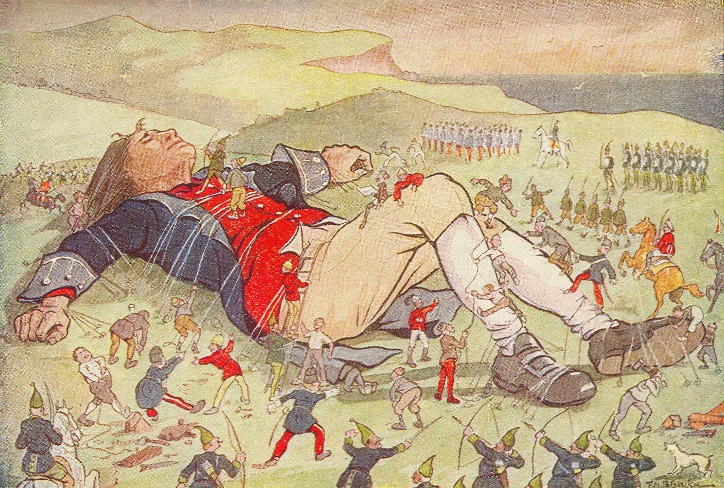
Can a story explain the concept of the Other? Jonathan Swift’s Gulliver’s Travels is about four different voyages that Gulliver undertakes. His first adventure is the most well-known; in the story, Lemuel Gulliver is a surgeon who plans a sea voyage when his business fails. During a storm at sea, he is shipwrecked, and he awakens to find himself bound and secured by a group of captors—the Lilliputians—who are six inches tall. Gulliver, having what Europeans consider a normal body height, suddenly becomes a giant. During this adventure, Gulliver is seen as an outsider, a stranger with different features and language. Gulliver becomes the Other.
What lessons about culture can we learn from Gulliver’s Travels? Swift’s story offers lessons about cultural differences, conflicts occurring in human society, and the balance of power. It also provides an important example of the Other. The Other is a matter of perspective in this story: Gulliver thinks the Lilliputians are strange and unusual. To Gulliver, the Lilliputians are the Other, but the Lilliputians equally see Gulliver as the Other—he is their captive and is a rare species of man because of his size.
The themes in Gulliver’s Travels describe different cultures and aspects of storytelling. The story uses language, customary behaviors, and the conflict between different groups to explore ideas of the exotic and strange. The story is framed as an adventure, but is really about how similar cultures can be. In the end, Gulliver becomes a member of another cultural group, learning new norms, attitudes, and behaviors. At the same time, he wants to colonize them, a reflection of his former cultural self.
Stories are an important part of culture, and when used to pass on traditions or cultural values, they can connect people to the past. Stories are also a way to validate religious, social, political, and economic practices from one generation to another. Stories are important because they are used in some societies to apply social pressure, to keep people in line, and are part of shaping the way that people think and behave.
Anthropologists as Storytellers
People throughout recorded history have relied on storytelling as a way to share cultural details. When early anthropologists studied people from other civilizations, they relied on the written accounts and opinions of others; they presented facts and developed their “stories,” about other cultures based solely on information gathered by others. These scholars did not have any direct contact with the people they were studying. This approach has come to be known as armchair anthropology. Simply put, if a culture is viewed from a distance (as from an armchair), the anthropologist tends to measure that culture from his or her own vantage point and to draw comparisons that place the anthropologist’s culture as superior to the one being studied. This point of view is also called ethnocentrism. Ethnocentrism is an attitude based on the idea that one’s own group or culture is better than any other.
Early anthropological studies often presented a biased ethnocentric interpretation of the human condition. For example, ideas about racial superiority emerged as a result of studying the cultures that were encountered during the colonial era. During the colonial era from the sixteenth century to the mid–twentieth century, European countries (Britain, France, Germany, Belgium, Dutch Republic, Spain, Portugal) asserted control over land (Asia, Africa, the Americas) and people. European ideas of wrong and right were used as a measuring stick to judge the way that people in different cultures lived. These other cultures were considered primitive, which was an ethnocentric term for people who were non-European. It is also a negative term suggesting that indigenous cultures had a lack of technological advancement. Colonizers thought that they were superior to the Other in every way.

Armchair anthropologists were unlikely to be aware of their ethnocentric ideas because they did not visit the cultures they studied. Scottish social anthropologist Sir James Frazer is well-known for his 1890 work The Golden Bough: A Study of Comparative Religions. Its title was later changed to A Study in Magic and Religion, and it was one of the first books to describe and record magical and religious beliefs of different culture groups around the world. Yet, this book was not the outcome of extensive study in the field. Instead, Frazer relied on the accounts of others who had traveled, such as scholars, missionaries, and government officials, to formulate his study.
Another example of anthropological writing without the use of fieldwork is Sir E. B. Tylor’s 1871 work Primitive Culture. Tylor, who went on to become the first professor of anthropology at Oxford University in 1896, was an important influence in the development of sociocultural anthropology as a separate discipline. Tylor defined culture as “that complex whole which includes knowledge, belief, art, law, morals, custom, and any other capabilities and habits acquired by man as a member of society.”[1] His definition of culture is still used frequently today and remains the foundation to the culture concept in anthropology.
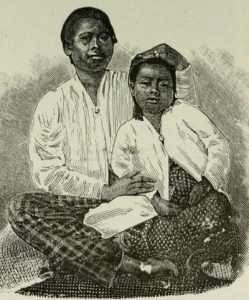
Tylor’s definition of culture was influenced by the popular theories and philosophies of his time, including the work of Charles Darwin. Darwin formulated the theory of evolution by natural selection in his 1859 book On the Origin of Species. Scholars of the time period, including Tylor, believed that cultures were subject to evolution just like plants and animals and thought that cultures developed over time from simple to complex. Many nineteenth century anthropologists believed that cultures evolved through distinct stages. They labeled these stages with terms such as savagery, barbarism, and civilization.[2] These theories of cultural evolutionism would later be successfully refuted, but conflicting views about cultural evolutionism in the nineteenth century highlight an ongoing nature versus nurture debate about whether biology shapes behavior more than culture.
Both Frazer and Tylor contributed important and foundational studies even though they never went into the field to gather their information. Armchair anthropologists were important in the development of anthropology as a discipline in the late nineteenth century because although these early scholars were not directly experiencing the cultures they were studying, their work did ask important questions—questions that could ultimately only be answered by going into the field.
Anthropologists as Cultural Participants
The armchair approach as a way to study culture changed when scholars such as Bronislaw Malinowski, Alfred Radcliffe-Brown, Franz Boas, and Margaret Mead took to the field and studied by being participants and observers. As they did, fieldwork became the most important tool anthropologists used to understand the “complex whole” of culture.
Bronislaw Malinowski, a Polish anthropologist, was greatly influenced by the work of Frazer. However, unlike the armchair anthropology approach Frazer used in writing The Golden Bough, Malinowski used more innovative ethnographic techniques, and his fieldwork took him off the veranda to study different cultures. The off the veranda approach is different from armchair anthropology because it includes active participant-observation: traveling to a location, living among people, and observing their day-to-day lives.
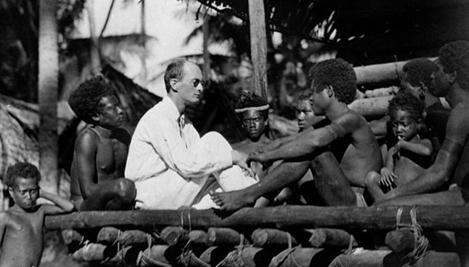
What happened when Malinowski came off the veranda? The Argonauts of the Western Pacific (1922) was considered the first modern ethnography and redefined the approach to fieldwork. This book is part of Malinowski’s trilogy on the Trobriand Islanders. Malinowski lived with them and observed life in their villages. By living among the islanders, Malinowski was able to learn about their social life, food and shelter, sexual behaviors, community economics, patterns of kinship, and family.[3]
Malinowski went “native” to some extent during his fieldwork with the Trobriand Islanders. Going native means to become fully integrated into a cultural group: taking leadership positions and assuming key roles in society; entering into a marriage or spousal contract; exploring sexuality or fully participating in rituals. When an anthropologist goes native, the anthropologist is personally involved with locals. In The Argonauts of the Western Pacific, Malinowski suggested that other anthropologists should “grasp the native’s point of view, his relations to life, to realize his vision of his world.”[4] However, as we will see later in this chapter, Malinowski’s practice of going native presented problems from an ethical point of view. Participant-observation is a method to gather ethnographic data, but going native places both the anthropologist and the culture group at risk by blurring the lines on both sides of the relationship.
THE DEVELOPMENT OF THEORIES OF CULTURE
Anthropology in Europe
The discipline of cultural anthropology developed somewhat differently in Europe and North America, in particular in the United States, during the nineteenth and early twentieth centuries with each region contributing new dimensions to the concept of culture. Many European anthropologists were particularly interested in questions about how societies were structured and how they remained stable over time. This highlighted emerging recognition that culture and society are not the same. Culture had been defined by Tylor as knowledge, beliefs, and customs, but a society is more than just shared ideas or habits. In every society, people are linked to one another through social institutions such as families, political organizations, and businesses. Anthropologists across Europe often focused their research on understanding the form and function of these social institutions.
European anthropologists developed theories of functionalism to explain how social institutions contribute to the organization of society and the maintenance of social order. Bronislaw Malinowski believed that cultural traditions were developed as a response to specific human needs such as food, comfort, safety, knowledge, reproduction, and economic livelihood. One function of educational institutions like schools, for instance, is to provide knowledge that prepares people to obtain jobs and make contributions to society. Although he preferred the term structural-functionalism, the British anthropologist A.R. Radcliffe-Brown was also interested in the way that social structures functioned to maintain social stability in a society over time.[5] He suggested that in many societies it was the family that served as the most important social structure because family relationships determined much about an individual’s social, political, and economic relationships and these patterns were repeated from one generation to the next. In a family unit in which the father is the breadwinner and the mother stays home to raise the children, the social and economic roles of both the husband and the wife will be largely defined by their specific responsibilities within the family. If their children grow up to follow the same arrangement, these social roles will be continued in the next generation.
In the twentieth century, functionalist approaches also became popular in North American anthropology, but eventually fell out of favor. One of the biggest critiques of functionalism is that it views cultures as stable and orderly and ignores or cannot explain social change. Functionalism also struggles to explain why a society develops one particular kind of social institution instead of another. Functionalist perspectives did contribute to the development of more sophisticated concepts of culture by establishing the importance of social institutions in holding societies together. While defining the division between what is cultural and what is social continues to be complex, functionalist theory helped to develop the concept of culture by demonstrating that culture is not just set of ideas or beliefs, but consists of specific practices and social institutions that give structure to daily life and allow human communities to function.
Anthropology in the United States
During the development of anthropology in North America (Canada, United States, and Mexico), the significant contribution made by the American School of Anthropology in the nineteenth and twentieth centuries was the concept of cultural relativism, which is the idea that cultures cannot be objectively understood since all humans see the world through the lens of their own culture. Cultural relativism is different than ethnocentrism because it emphasizes understanding culture from an insider’s view. The focus on culture, along with the idea of cultural relativism, distinguished cultural anthropology in the United States from social anthropology in Europe.
The participant-observation method of fieldwork was a revolutionary change to the practice of anthropology, but at the same time it presented problems that needed to be overcome. The challenge was to move away from ethnocentrism, race stereotypes, and colonial attitudes, and to move forward by encouraging anthropologists to maintain high ethical standards and open minds.
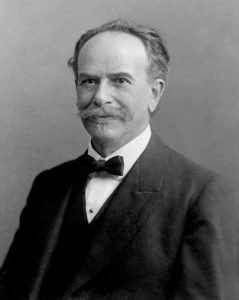
Franz Boas, an American anthropologist, is acknowledged for redirecting American anthropologists away from cultural evolutionism and toward cultural relativism. Boas first studied physical science at the University of Kiel in Germany. Because he was a trained scientist, he was familiar with using empirical methods as a way to study a subject. Empirical methods are based on evidence that can be tested using observation and experiment.
In 1883, Franz Boas went on a geographical expedition to Baffin Island in the Canadian Arctic. The Central Eskimo (1888) details his time spent on Baffin Island studying the culture and language of the central Eskimo (Inuit) people. He studied every aspect of their culture such as tools, clothing, and shelters. This study was Boas’ first major contribution to the American school of anthropology and convinced him that cultures could only be understood through extensive field research. As he observed on Baffin Island, cultural ideas and practices are shaped through interactions with the natural environment. The cultural traditions of the Inuit were suited for the environment in which they lived. This work led him to promote cultural relativism: the principle that a culture must be understood on its own terms rather than compared to an outsider’s standard. This was an important turning point in correcting the challenge of ethnocentrism in ethnographic fieldwork.[6]
Boas is often considered the originator of American anthropology because he trained the first generation of American anthropologists including Ruth Benedict, Margaret Mead, and Alfred Kroeber. Using a commitment to cultural relativism as a starting point, these students continued to refine the concept of culture. Ruth Benedict, one of Boas’ first female students, used cultural relativism as a starting point for investigating the cultures of the American northwest and southwest. Her best-selling book Patterns of Culture (1934) emphasized that culture gives people coherent patterns for thinking and behaving. She argued that culture affects individuals psychologically, shaping individual personality traits and leading the members of a culture to exhibit similar traits such as tendency toward aggression, or calmness.
Benedict was a professor at Columbia University and in turn greatly influenced her student Margaret Mead, who went on to become one of the most well-known female American cultural anthropologists. Mead was a pioneer in conducting ethnographic research at a time when the discipline was predominately male. Her 1925 research on adolescent girls on the island of Ta‘ū in the Samoan Islands, published as Coming of Age in Samoa (1928), revealed that teenagers in Samoa did not experience the same stress and emotional difficulties as those in the United States. The book was an important contribution to the nature versus nurture debate, providing an argument that learned cultural roles were more important than biology. The book also reinforced the idea that individual emotions and personality traits are products of culture.
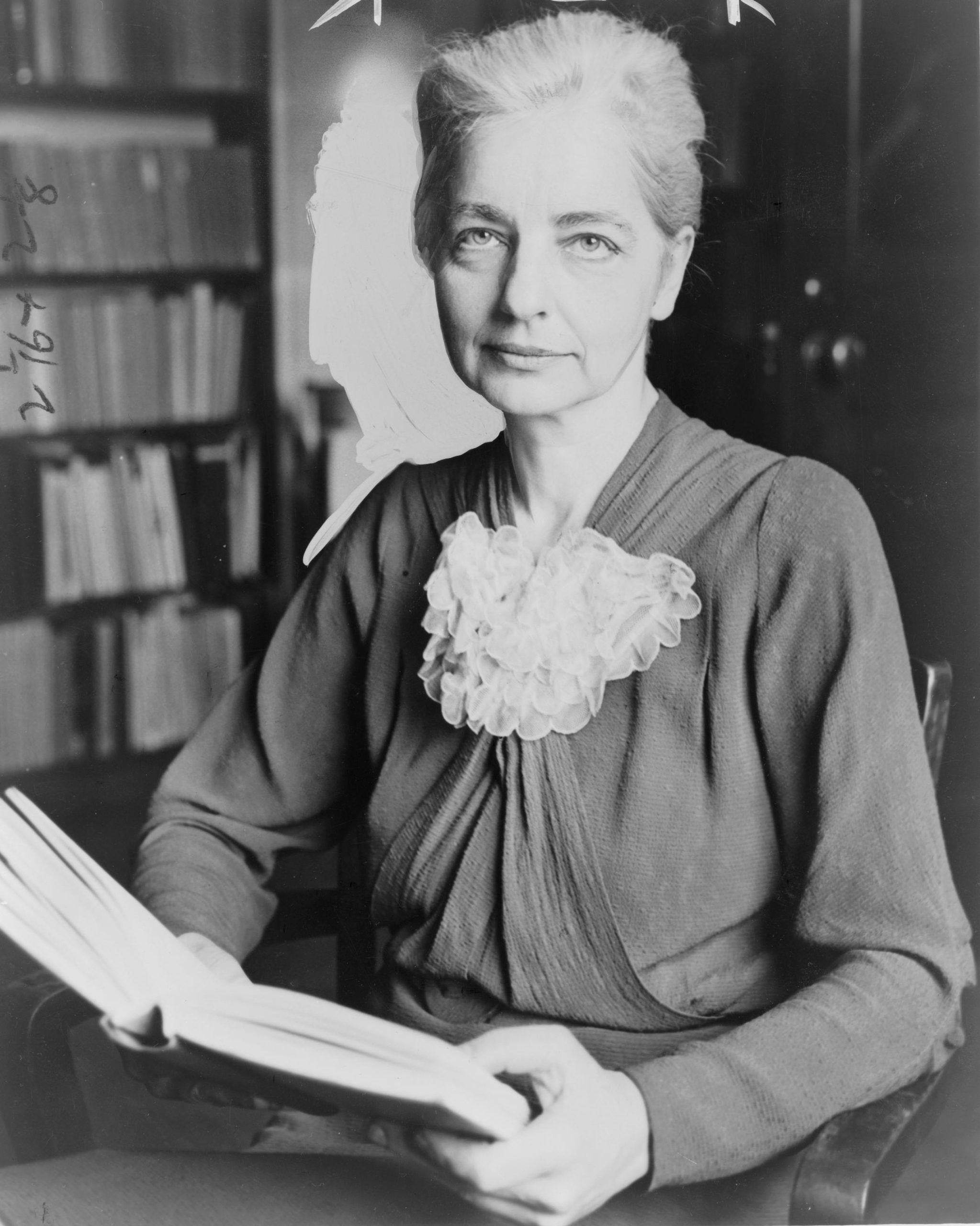
Alfred Louis Kroeber, another student of Boas, also shared the commitment to field research and cultural relativism, but Kroeber was particularly interested in how cultures change over time and influence one another. Through publications like The Nature of Culture (1952), Kroeber examined the historical processes that led cultures to emerge as distinct configurations as well as the way cultures could become more similar through the spread or diffusion of cultural traits. Kroeber was also interested in language and the role it plays in transmitting culture. He devoted much of his career to studying Native American languages in an attempt to document these languages before they disappeared.
Anthropologists in the United States have used cultural relativism to add depth to the concept of culture in several ways. Tylor had defined culture as including knowledge, belief, art, law, morals, custom, capabilities and habits. Boas and his students added to this definition by emphasizing the importance of enculturation, the process of learning culture, in the lives of individuals. Benedict, Mead, and others established that through enculturation culture shapes individual identity, self-awareness, and emotions in fundamental ways. They also emphasized the need for holism, approaches to research that considered the entire context of a society including its history.
Kroeber and others also established the importance of language as an element of culture and documented the ways in which language was used to communicate complex ideas. By the late twentieth century, new approaches to symbolic anthropology put language at the center of analysis. Later on, Clifford Geertz, the founding member of postmodernist anthropology, noted in his book The Interpretation of Cultures (1973) that culture should not be seen as something that was “locked inside people’s heads.” Instead, culture was publically communicated through speech and other behaviors. Culture, he concluded, is “an historically transmitted pattern of meanings embodied in symbols, a system of inherited conceptions expressed in symbolic forms by means of which men communicate, perpetuate, and develop their knowledge about and their attitudes toward life.”[7] This definition, which continues to be influential today, reflects the influence of many earlier efforts to refine the concept of culture in American anthropology.
Ethical Issues in Truth Telling
As anthropologists developed more sophisticated concepts of culture, they also gained a greater understanding of the ethical challenges associated with anthropological research. Because participant-observation fieldwork brings anthropologists into close relationships with the people they study, many complicated issues can arise. Cultural relativism is a perspective that encourages anthropologists to show respect to members of other cultures, but it was not until after World War II that the profession of anthropology recognized a need to develop formal standards of professional conduct.
The Nuremberg trials, which began in 1945 in Nuremberg, Germany and were conducted under the direction of the France, the Soviet Union, the United Kingdom, and the United States, prosecuted members of the Nazi regime for war crimes. In addition to military and political figures, physicians and scientists were also prosecuted for unethical human experimentation and mass murder. The trials demonstrated that physicians and other scientists could be dangerous if they used their skills for abusive or exploitative goals. The Nuremberg Code that emerged from the trials is considered a landmark document in medical and research ethics. It established principles for the ethical treatment of the human subjects involved in any medical or scientific research.
Many universities adopted principles from the Nuremberg Code to write ethical guidelines for the treatment of human subjects. Anthropologists and students who work in universities where these guidelines exist are obliged to follow these rules. The American Anthropological Association (AAA), along with many anthropology organizations in other countries, developed codes of ethics describing specific expectations for anthropologists engaged in research in a variety of settings. The principles in the AAA code of ethics include: do no harm; be open and honest regarding your work; obtain informed consent and necessary permissions; ensure the vulnerable populations in every study are protected from competing ethical obligations; make your results accessible; protect and preserve your records; and maintain respectful and ethical professional relationships. These principles sound simple, but can be complicated in practice.
Bronislaw Malinowski
The career of Bronislaw Malinowski provides an example of how investigations of culture can lead anthropologists into difficult ethical areas. As discussed above, Malinowski is widely regarded as a leading figure in the history of anthropology. He initiated the practice of participant-observation fieldwork and published several highly regarded books including The Argonauts of the Western Pacific. Following his death, the private diary he kept while conducting fieldwork was discovered and published as A Diary in the Strictest Sense of the Term (1967). The diary described Malinowski’s feelings of loneliness and isolation, but also included a great deal of information about his sexual fantasies as well his some insensitive and contemptuous opinions about the Trobriand Islanders. The diary provided valuable insight into the mind of an important ethnographer, but also raised questions about the extent to which his personal feelings, including bias and racism, were reflected in his official conclusions.
Most anthropologists keep diaries or daily notes as a means of keeping track of the research project, but these records are almost never made public. Because Malinowski’s diary was published after his death, he could not explain why he wrote what he did, or assess the extent to which he was able to separate the personal from the professional. Which of these books best reflects the truth about Malinowski’s interaction with the Trobriand Islanders? This rare insight into the private life of a field researcher demonstrates that even when anthropologists are acting within the boundaries of professional ethics, they still struggle to set aside their own ethnocentric attitudes and prejudices.
Napoleon Chagnon
A more serious and complicated incident concerned research conducted among the Yanomami, an indigenous group living in the Amazon rainforest in Brazil and Venezuela. Starting in the 1960s, the anthropologist Napoleon Chagnon and James Neel, a geneticist, carried out research among the Yanomami. Neel was interested in studying the effects of radiation released by nuclear explosions on people living in remote areas. Chagnon was investigating theories about the role of violence in Yanomami society. In 2000, an American journalist, Patrick Tierney, published a book about Chagnon and Neel’s research: Darkness in El Dorado: How Scientists and Journalists Devastated the Amazon. The book contained numerous stunning allegations, including a claim that the pair had deliberately infected the Yanomami with measles, starting an epidemic that killed thousands of people. The book also claimed that Neel had conducted medical experiments without the consent of the Yanomami and that Chagnon had deliberately created conflicts between Yanomami groups so he could study the resulting violence.
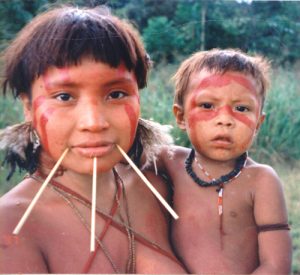
These allegations were brought to the attention of the American Anthropological Association, and a number of inquiries were eventually conducted. James Neel was deceased, but Napoleon Chagnon steadfastly denied the allegations. In 2002, the AAA issued their report; Chagnon was judged to have misrepresented the violent nature of Yanomami culture in ways that caused them harm and to have failed to obtain proper consent for his research. However, Chagnon continued to reject these conclusions and complained that the process used to evaluate the evidence was unfair. In 2005, the AAA rescinded its own conclusion, citing problems with the investigation process. The results of several years of inquiry into the situation satisfied few people. Chagnon was not definitively pronounced guilty, nor was he exonerated. Years later, debate over this episode continues.[8] The controversy demonstrates the extent to which truth can be elusive in anthropological inquiry. Although anthropologists should not be storytellers in the sense that they deliberately create fictions, differences in perspective and theoretical orientation create unavoidable differences in the way anthropologists interpret the same situation. Anthropologists must try to use their toolkit of theory and methods to ensure that the stories they tell are truthful and represent the voice of the people being studied using an ethical approach.
BACK IN THE COFFEE SHOP
This chapter has looked at some historic turning points in the way anthropologists have defined culture. There is not one true, absolute definition of culture. Anthropologists respect traditions such as language; the development of self, especially from infancy to adulthood; kinship; and the structure of the social unit, or the strata of a person within their class structure; marriage, families, and rites of passage; systems of belief; and ritual. However, anthropologists also look at change and the impact it has on those traditions.
With globalization moving at a dramatic pace, and change unfolding daily, how will emerging trends redefine the culture concept? For example, social media and the Internet connect the world and have created new languages, relationships, and an online culture without borders. This leads to the question: is digital, or cyber anthropology the future? Is the study of online cultures, which are encountered largely through reading text, considered armchair or off the veranda research? Is the cyber world a real or virtual culture? In some ways, addressing online cultures takes anthropology back to its roots as anthropologists can explore new worlds without leaving home. At the same time, cyberspaces and new technologies allow people to see, hear, and communicate with others around the world in real time.
Back in the coffee shop, where we spent time with Bob, we discovered that he hoped to keep familiar aspects of his own culture, traditions such as language, social structure, and unique expressions of values, alive. The question, what is culture, caused us to reflect on our own understandings of the cultural self and the cultural Other, and on the importance of self and cultural awareness.
Emily
My cultural self has evolved from the first customary traditions of my childhood, yet my life with the Inuit caused me to consider that I have similar values and community traits as my friends in the North. My childhood was focused on caring, acceptance, and working together to achieve the necessities of life. Life on the land with the Inuit was no different, and throughout the years, I have seen how much we are the same, just living in different locations and circumstances. My anthropological training has enriched my life experiences by teaching me to enjoy the world and its peoples. I have also experienced being the cultural Other when working in the field, and this has always reminded me that the cultural self and the cultural Other will always be in conflict with each other on both sides of the experience.
Priscilla
Living with different indigenous tribes in Kenya gave me a chance to learn how communities maintain their traditional culture and ways of living. I come from a Portuguese- Canadian family that has kept strong ties to the culture and religion of our ancestors. Portuguese people believe storytelling is a way to keep one’s traditions, cultural identity, indigenous knowledge, and language alive. When I lived in Nairobi Province, Kenya, I discovered that people there had the same point of view. I found it odd that people still define their identities by their cultural history. What I have learned by conducting cultural fieldwork is that the meanings of culture not only vary from one group to another, but that all human societies define themselves through culture.
Our Final Reflection
Bob took us on a journey to understand what is at the heart of the culture concept. Clearly, the culture concept does not follow a straight line. Scholars, storytellers, and the people one meets in everyday life have something to say about the components of culture. The story that emerges from different voices brings insight into what it is to be human. Defining the culture concept is like putting together a puzzle with many pieces. The puzzle of culture concepts is almost complete, but it is not finished…yet.
Discussion Questions
-
How did the armchair anthropology and the off the veranda approaches differ as methods to study culture? What can be learned about a culture by experiencing it in person that cannot be learned from reading about it?
-
Why is the concept of culture difficult to define? What do you think are the most important elements of culture?
-
Why is it difficult to separate the “social” from the “cultural”? Do you think this is an important distinction?
-
In the twenty-first century, people have much greater contact with members of other cultures than they did in the past. Which topics or concerns should be priorities for future studies of culture?
GLOSSARY
Armchair anthropology: an early and discredited method of anthropological research that did not involve direct contact with the people studied.
Cultural determinism: the idea that behavioral differences are a result of cultural, not racial or genetic causes.
Cultural evolutionism: a discredited theory popular in nineteenth century anthropology suggesting that societies evolved through stages from simple to advanced.
Cultural relativism: the idea that we should seek to understand another person’s beliefs and behaviors from the perspective of their own culture and not our own.
Culture: a set of beliefs, practices, and symbols that are learned and shared. Together, they form an all-encompassing, integrated whole that binds people together and shapes their worldview and lifeways.
Enculturation: the process of learning the characteristics and expectations of a culture or group.
Ethnocentrism: the tendency to view one’s own culture as most important and correct and as the stick by which to measure all other cultures.
Functionalism: an approach to anthropology developed in British anthropology that emphasized the way that parts of a society work together to support the functioning of the whole.
Going native: becoming fully integrated into a cultural group through acts such as taking a leadership position, assuming key roles in society, entering into marriage, or other behaviors that incorporate an anthropologist into the society he or she is studying.
Holism: taking a broad view of the historical, environmental, and cultural foundations of behavior.
Kinship: blood ties, common ancestry, and social relationships that form families within human groups.
Participant observation: a type of observation in which the anthropologist observes while participating in the same activities in which her informants are engaged.
Structural-Functionalism: an approach to anthropology that focuses on the ways in which the customs or social institutions in a culture contribute to the organization of society and the maintenance of social order.
The Other: is a term that has been used to describe people whose customs, beliefs, or behaviors are “different” from one’s own
ABOUT THE AUTHORS
 Dr. Priscilla Medeiros is a medical anthropologist and Postdoctoral Fellow in the Women’s College Research Institute at Women’s College Hospital, Canada. She recently defended her thesis in January 2019 at McMaster University, Ontario. Her primary research interests center on the anthropology of health. This involves studying the biocultural dimensions of medicine, with a particular emphasis on the history and development of public health measures in developed countries, sickness and inequalities, and gender relationships. Priscilla began her community-based work in prevention, care, and support of people living with HIV seven years ago in Nairobi County, Kenya, as part of her master’s degree at the University of New Brunswick. Her current postdoctoral work focuses on geospatial analysis of data from the Canadian HIV Women’s Sexual and Reproductive Health Study (CHIWOS) and expansion to the Atlantic Provinces, and is funded by the CIHR Canadian HIV Trials Network. When she is not working in the field or teaching in the classroom, Priscilla is traveling to exotic destinations to learn to prepare local cuisine, speak foreign languages, and explore the wonders of the world. In fact, she is the real-life Indiana Jane of anthropology when it comes to adventures in the field and has many great stories to share.
Dr. Priscilla Medeiros is a medical anthropologist and Postdoctoral Fellow in the Women’s College Research Institute at Women’s College Hospital, Canada. She recently defended her thesis in January 2019 at McMaster University, Ontario. Her primary research interests center on the anthropology of health. This involves studying the biocultural dimensions of medicine, with a particular emphasis on the history and development of public health measures in developed countries, sickness and inequalities, and gender relationships. Priscilla began her community-based work in prevention, care, and support of people living with HIV seven years ago in Nairobi County, Kenya, as part of her master’s degree at the University of New Brunswick. Her current postdoctoral work focuses on geospatial analysis of data from the Canadian HIV Women’s Sexual and Reproductive Health Study (CHIWOS) and expansion to the Atlantic Provinces, and is funded by the CIHR Canadian HIV Trials Network. When she is not working in the field or teaching in the classroom, Priscilla is traveling to exotic destinations to learn to prepare local cuisine, speak foreign languages, and explore the wonders of the world. In fact, she is the real-life Indiana Jane of anthropology when it comes to adventures in the field and has many great stories to share.
 Dr. Emily Cowall is a cultural anthropologist and instructor in the department of Anthropology at McMaster University, Canada; Medical Historian; and former regulated health practitioner in Ontario. Her primary academic research interests are focused on the cultural ethno-history of the Canadian Arctic. Emily moved to the Eastern Arctic in the 1980s, where she became integrated into community life. Returning for community-based research projects from 2003-2011, her previous community relationships enabled the completion of a landmark study examining the human geography and cultural impact of tuberculosis from 1930-1972. From 2008-2015, her work in cultural resource management took her to the Canadian High Arctic archipelago to create a museum dedicated to the Defense Research Science Era at Parks Canada, Quttinirpaaq National Park on Ellesmere Island. When she is not jumping into Twin Otter aircraft for remote field camps, she is exploring cultural aspects of environmental health and religious pilgrimage throughout Mexico.
Dr. Emily Cowall is a cultural anthropologist and instructor in the department of Anthropology at McMaster University, Canada; Medical Historian; and former regulated health practitioner in Ontario. Her primary academic research interests are focused on the cultural ethno-history of the Canadian Arctic. Emily moved to the Eastern Arctic in the 1980s, where she became integrated into community life. Returning for community-based research projects from 2003-2011, her previous community relationships enabled the completion of a landmark study examining the human geography and cultural impact of tuberculosis from 1930-1972. From 2008-2015, her work in cultural resource management took her to the Canadian High Arctic archipelago to create a museum dedicated to the Defense Research Science Era at Parks Canada, Quttinirpaaq National Park on Ellesmere Island. When she is not jumping into Twin Otter aircraft for remote field camps, she is exploring cultural aspects of environmental health and religious pilgrimage throughout Mexico.
BIBLIOGRAPHY
Benedict, Ruth. Patterns of Culture. Boston: Houghton and Mifflin Company, 1934.
Boas, Franz. Race, Language, and Culture. Chicago: University of Chicago Press, 1940.
Darwin, Charles. On the Origin of Species. London: John Murray, Albemarle Street, 1859.
Kroeber, Alfred. The Nature of Culture. Chicago: University of Chicago Press, 1952.
Malinowski, Bronislaw. Argonauts of the Western Pacific. London: Routledge and Sons, 1922.
Mead, Margaret. Coming of Age in Samoa: A Psychological Study of Primitive Youth for Western Civilization. New York: William Morrow and Company, 1928.
Swift, Jonathan. Gulliver’s Travels into Several Remote Nations of the World. London: Benjamin Motte, 1726.
Tylor, Edward B. Primitive Culture: Researches into the Development of Mythology, Philosophy, Religion, Language, Art, and Customs. London: Cambridge University Press. 1871.
- Edward B. Tylor, Primitive Culture: Researches into the Development of Mythology, Philosophy, Religion, Language, Art, and Customs (London: Cambridge University Press, 1871), preface. ↵
- Lewis Henry Morgan was one anthropologist who proposed an evolutionary framework based on these terms in his book Ancient Society (New York: Henry Holt, 1877). ↵
- The film Bronislaw Malinowski: Off the Veranda, (Films Media Group, 1986) further describes Malinowski’s research practices. ↵
- Bronislaw Malinowski. Argonauts of the Western Pacific (London: Routledge & Keegan Paul, 1922), 290. ↵
- For more on this topic see Adam Kuper, Anthropology and Anthropologists: The Modern British School (New York: Routledge, 1983) and Alfred Radcliffe-Brown, Structure and Function in Primitive Society (London: Cohen and West, 1952). ↵
- Boas’ attitudes about cultural relativism were influenced by his experiences in the Canadian Arctic as he struggled to survive in a natural environment foreign to his own prior experience. His private diary and letters record the evolution of his thinking about what it means to be “civilized.” In a letter to his fiancé, he wrote: “I often ask myself what advantages our 'good society' possesses over that of the 'savages' and find, the more I see of their customs, that we have no right to look down upon them ... We have no right to blame them for their forms and superstitions which may seem ridiculous to us. We ‘highly educated people’ are much worse, relatively speaking.” The entire letter can be read in George Stocking, ed. Observers Observed: Essays on Ethnographic Fieldwork (Madison, WI: University of Wisconsin Press, 1983), 33. ↵
- Clifford Geertz, The Interpretation of Culture (New York: Basic Books, Geertz 1973), 89. ↵
- For more information about the controversy, see Thomas Gregor and Daniel Gross, “Guilt by Association: The Culture of Accusation and the American Anthropological Associations Investigation of Darkness in El Dorado.” American Anthropologist 106 no. 4 (2004):687-698 and Robert Borofsky, Yanomami: The Fierce Controversy and What We Can Learn From It (Berkley: University California Press, 2005). Napoleon Chagnon has written his rebuttal in Noble Savages: My Life Among Two Dangerous Tribes—The Yanomamo and the Anthropologists (New York: Simon and Schuster, 2013). ↵
A term that has been used to describe people whose customs, beliefs, or behaviors are “different” from one’s own
An early and discredited method of anthropological research that did not involve direct contact with the people studied.
The tendency to view one’s own culture as most important and correct and as the stick by which to measure all other cultures.
A discredited theory popular in nineteenth century anthropology suggesting that societies evolved through stages from simple to advanced.
A type of observation in which the anthropologist observes while participating in the same activities in which her informants are engaged.
Blood ties, common ancestry, and social relationships that form families within human groups.
Becoming fully integrated into a cultural group through acts such as taking a leadership position, assuming key roles in society, entering into marriage, or other behaviors that incorporate an anthropologist into the society he or she is studying.
An approach to anthropology developed in British anthropology that emphasized the way that parts of a society work together to support the functioning of the whole.
An approach to anthropology that focuses on the ways in which the customs or social institutions in a culture contribute to the organization of society and the maintenance of social order.
The idea that we should seek to understand another person’s beliefs and behaviors from the perspective of their own culture and not our own.
The process of learning the characteristics and expectations of a culture or group.
Taking a broad view of the historical, environmental, and cultural foundations of behavior.
